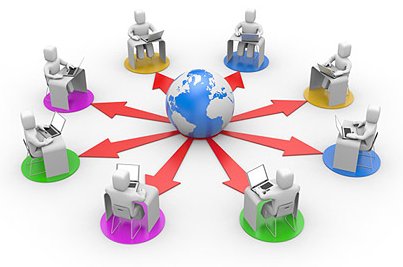Leadership Catalyst Blog

Global Macro Economic Trends that will Impact your Twin Cities Business
All Blog Posts, Business, Change, Strategy / 02.04.2014
Vistage Chairs bring in a wide range of experts to address our CEO and Executive Peer Groups in Minneapolis every month. Our goal as Vistage Chairs is to increase the effectiveness of CEOs, and one way we do this is by bringing in a speaker on a very specific topic such as how to attract and hire top talent. We will also, bring in speakers who will help our Vistage members take a longer, big picture view of their businesses. In these instances, we encourage executives to look up and scan the radar for what they will be facing in the years to come in addition to focusing on the short-term turbulence they are experiencing.
Herb Meyer, the former senior CIA executive in the Reagan Administration was one such speaker. Since leaving The Agency, Herb has applied his intelligence gathering skills to collecting important data on economic, social, political, and population trends that will dramatically impact our businesses.
Herb presented three megatrends to watch out for and their implications for growing your business.
1. The world is becoming modernized. Technology is sweeping the planet at an amazing rate. Cell phones, the internet, social media, TV, and satellites are connecting people to what is happening throughout the world. Young people throughout the world now have cell phones, and Ipads and can download books, movies, TV shows, and on-line courses from anywhere. Agricultural breakthroughs mean that for the first time in world history, very few people are starving in the “Modern World”, and a major problem for poor people in these countries is obesity.
2. The world is becoming rich. Not only are Millionaires multiplying all over the globe, 50 – 100 million people are coming out of poverty every year. (Non-poverty is defined as having enough to eat, children being inoculated, at least 1 parent working, and having some disposable income.) This means the creation of a large middle class, with 50 – 100 million new customers every year who want the modern conveniences they see on TV and online. The emerging middle class may not be located where we would like them to be, so our challenge is to innovate clever, inexpensive, and green products to serve them.
3. The modern world is becoming old. Populations throughout the world are aging at an alarming rate at the same time as birth rates are plunging. Let’s look at the statistics:
A birthrate of 2.1 births per female is needed to sustain a population, and when birthrates dip consistently below 1.3, a population is on a suicide trajectory. In Europe, the average birthrate is 1.5, and the modern countries that are aging the fastest are Germany, Italy and Spain, all of which have birthrates at or below the 1.3 threshold. In Germany, 30% of all women and 40% of all college educated women are childless. If nothing changes, by 2040, 61% of their population will be over the age of 55. In Italy and Spain the birthrate is at 1.2 and heading for 1.1, and in 20 years they will lose 20% of their workforce. The story is the same in many Asian countries, including Japan, China, and Singapore. In Japan the birthrate is also 1.3, but the population is aging faster. In 20 years, 1 of 5 of their people will be over 70 years old, and in 30 years, the Japanese population will shrink by 60-70 million.. The population is literally dying out, and the people will not tolerate immigration to replace their young people.
In North America, the U.S birthrate is 2.1, (the Anglo birth rate is 1.8 and the Hispanic birthrate is 3.2) and in Canada the birthrate is at 1.5. Finally the birthrate in Mexico is slowing but it is still a healthy 2.6 – 2.7, which means a huge emerging middle class.
By far, the fastest growing populations are in the Muslim world, where birthrates range from 2.6 to 6.8. Two notable exceptions are Turkey and Iran, where birthrates are plummeting.
The implication is that there is a huge growing market for products and services for an aging population with fewer and fewer young people to support them. In Japan, for the first time in history, adult diapers are outselling baby diapers, and a company has invented a robot for bathing people. In Germany, BMW has built a new plant designed for older workers – brighter lighting, non-slip floors and new tooling that requires less physical strength. In Canada, homes are being retrofitted with colored strips across steps and shower ledges to help the elderly with failing depth perception see them and avoid debilitating falls in the home that often result in broken hips.
One of my Minneapolis Vistage members, who manufacturers high pressure hoses for filling industrial gas and oxygen bottles, is seeing a huge increase in demand in the home oxygen tank market. There is huge growth ahead for businesses that figure out how to better serve the wealthy aging population with their existing and new products and services.
So what are these huge business growth opportunities?
1. Look for better ways to meet the needs of an aging world population with fewer young people to take care of them.
2. Adapt your products and services to meet the needs of the 50 – 100 million new customers in the emerging global middle class through the prism of clever, inexpensive and green.
3. As one billion people cross the poverty line in the next couple of decades, there will be tremendous opportunity in the areas of energy, food (especially protein), infrastructure, education, and entertainment. Coincidentally, these are 6 industries in which the U.S. leads the world.
So what about Brazil, Russia, India, and China? Next week’s post will outline the unique challenges and opportunities facing these countries, and why China and Russia are hitting the wall.
Read More >>